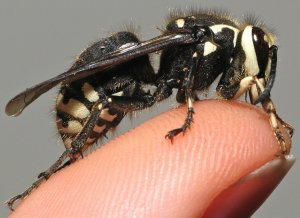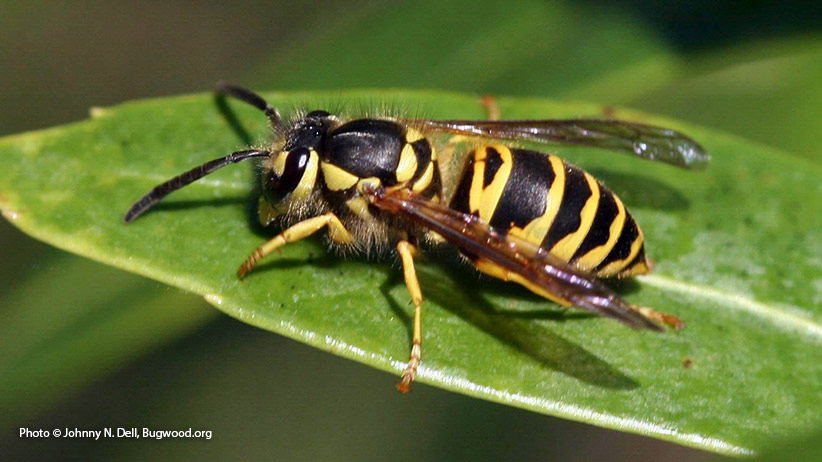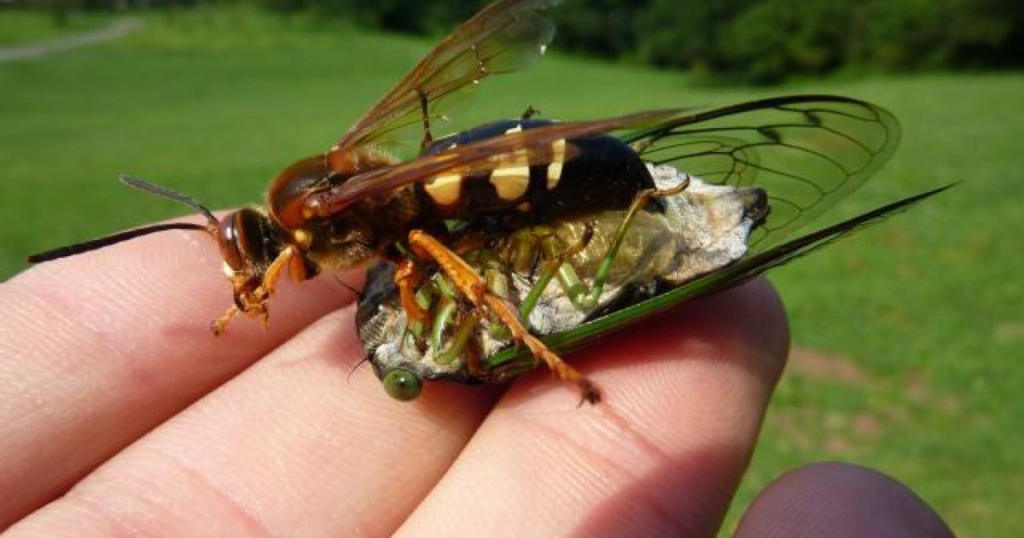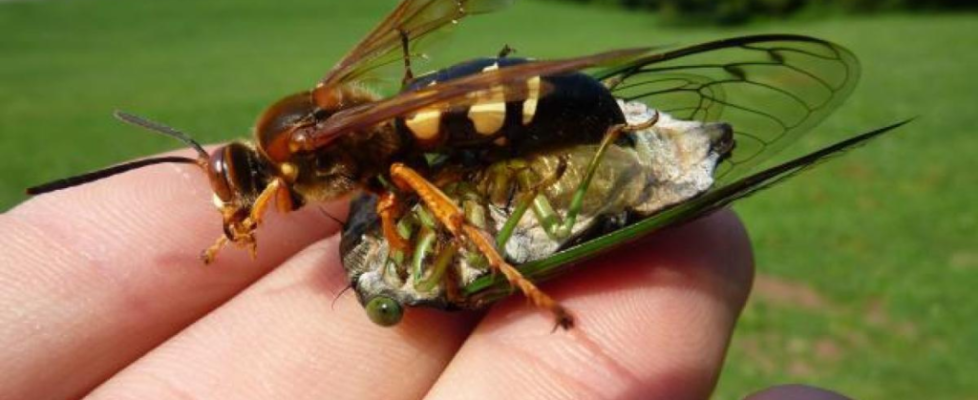These are not “Murder Hornets”
One summer night in 1975, I ventured into a movie theater to see Jaws. And Steven Spielberg’s witty, entertaining thriller terrified me—along with millions of others that summer. At least for a while, its story of a rogue great white shark terrorizing a beach community truly did have the effect its tagline promised: “You’ll never go in the water again.” (Despite the fact that there are only about four or five fatalities from shark attacks each year worldwide.)
But besides making a fortune while scaring us senseless, Jaws had other, far darker consequences: an immediate and long-lasting boom in shark-hunting. This indiscriminate slaughter led to the deaths of a vast number of great whites and other shark species.
This has come to mind often over the past few weeks as I’ve been thinking about the Asian giant hornet, colorfully nicknamed the “Murder Hornet.”The breathless headlines trumpeting its arrival in the Pacific Northwest and western Canada could be straight out of a insect version of the film. And their effect may be just as dire.
Like great white sharks, giant hornets are impressive (the queen can be more than two inches long and individuals can fly at 25 miles per hour) and pose a legitimate threat. They aggressively defend their nests, their stinger is long and powerful, their sting is extraordinarily painful, and their venom is toxic. (The stings can be fatal in humans, though this is rare.)
But the giant hornet’s biggest threat is actually to already beleaguered honey bees, to the flowers that depend on the bees as pollinators, and to the beekeepers who tend them. As the headlines have screamed, , a single giant hornet can kill 40 honeybees a minute, and swarms can easily lay waste to entire hives.
But at the moment Asian giant hornets, exist in North America in only exceedingly small numbers and limited areas. If efforts to find and destroy them succeed, the species may never establish itself on the West Coast, and certainly not in the East .
Yet, especially as the spring proceeds, it seems likely that many of our neighbors, freaked out by the media drumbeat about “Murder Hornets,” will do what people often do when freaked out: attack, even before they really know their enemy. In this case, “attacking” will likely mean using pesticides on native wasps, whether they are a threat or not.
This makes it an ideal time to get to know three common species in our region that are not Murder Hornets.

Bald-Faced Hornet (Dolichovespula maculata)
Rising from a flower to check you out, these large (though barely half the size of Asian giant hornets), black-and-white wasps make for an impressive sight. And if disturbed they can deliver a powerfully venomous sting. (So don’t disturb them!)
By the end of a summer, a bald-faced hornet’s above-ground nest, often located in the crook of a tree branch, can be two feet high and 18 inches wide. An active nest crawling with workers ready to defend it is a sobering sight.
Yet the positive impact that hornet populations have on the ecosystem’s health is significant. The workers help pollinate flowering plants and are themselves an important food source for a variety of mammals, birds, frogs, and praying mantids. They’re even directly beneficial to humans, because along with nectar and sap they prey extensively on flies, especially the horseflies and deerflies that can plague us in summer.

Eastern Yellowjacket (Vespula maculifrons)
The bald-faced hornet’s little black-and-yellow cousin is probably our most familiar—and widely loathed—wasp. All summer long and especially in the fall, yellowjackets seem to be everywhere, especially where someone’s trying to enjoy a meal outdoors. More than one picnicker has drunk from a cup or can of soda and received a painful surprise from the small wasp that got there first.
Further, yellowjacket nests—typically built underground—can be huge, containing up to 5000 workers. Yellowjackets defending their nests are notably aggressive, and, like most wasps, tend to sting repeatedly. So it’s understandable that anyone with a nest in the front yard or under a shingle will want it removed ASAP.
Yet, as with bald-faced hornets, at a time of collapse of honey bee and other insect populations, the abundant yellowjacket serves as a vehicle for plant pollination. Since yellowjackets are also active carnivores (one of their common nicknames is “meat bees”), they naturally control the flies, grubs, and other insects that attack our farms and gardens.
Despite their predatory habits and obvious interest in the burgers we’ve brought out to grill, worker yellowjackets don’t actually eat much meat. (They prefer foods rich in carbohydrates.) Yet the hive couldn’t survive without the protein they bring back.
Here’s how: The process begins when a yellowjacket worker kills an insect. It will then cut its prey up with its sharp mandibles and carry each piece to the nest.
Unlike the adults, yellowjacket larvae need plenty of protein. Back at the nest, the worker will masticate the bug parts and feed them to the larvae. In turn, the larva’s salivary glands will secrete a sweet liquid for the worker to eat. This elegant process, called trophallaxis, helps insure that both adult and larval wasp will receive the nourishment they need.
I realize that sometimes it’s hard to see the forest for the bees. But fascinating phenomena like trophallaxis—and the whole complex, surprising lifecycle of the yellowjacket—only make me admire them more, and want to learn more about them.

Cicada Killer (Sphecius speciosus)
Of all the wasps that could be incorrectly identified as “Murder Hornets,” the most likely candidate is our most noticeable—yet least aggressive—local wasp: the cicada killer. At up to two inches long, cicada killers are big and stocky. They’re gaudy, too, with reddish wings and black and brown bodies patterned with white patches.
Their behavior is just as ostentatious. Even though they’re solitary wasps, not living in colonies, you’ll frequently find a group of them excavating large burrows in patches of their prime breeding habitat: light-textured, well-drained soil. Among their favorite sites in our area are front walks, at the base of stone walls, in window boxes, and other places close to where we live and work.
Cicada killers are also curious and territorial. At least the males are, often grappling with each other over turf and buzzing around everyone and everything that moves through their territory. As one hovers near you, it might even give the sense that it’s sizing you up.
Admittedly, to be stared at by a large wasp can be a sobering prospect. Here’s the thing, though: The males have no stingers. Buzzing around is all they can do to warn you off.
On the other hand, the females do have a powerful stinger…but they have no interest in you whatsoever. They’re not territorial at all. In fact, you can walk right past—or over—a female cicada as she excavates her burrow, and she won’t pay you any mind.
She’s saving her venom for one specific task: to paralyze the cicadas that will serve as a food source for her larvae. In doing so, she’s helping keep populations of cicadas—which eat sap and in abundant years can damage trees and bushes—in natural balance.
Whether we ever have the right to extirpate a species that might be a threat to us is a debate that plays out whenever humans encounter something potentially dangerous (such as coyotes, venomous snakes, or the great white sharks made notorious by Jaws). Given the outcome of this debate throughout our history, I worry that, in the era of the Murder Hornet, our fascinating and beneficial native wasps may suffer as well. As will we, too, from their loss.
Copyright © 2020 by Joseph Wallace



